By: debbie lynn elias
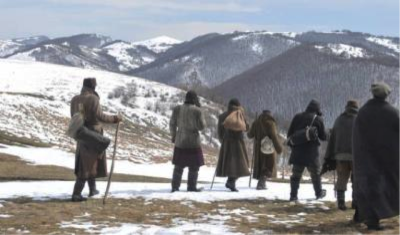
In 1956, the world was gifted with an astounding “autobiography” by Slavomir Rawicz – “The Long Walk: The True Story of a Trek to Freedom. Translated into 30 languages, this was the story of Rawicz’ escape from a Siberian gulag and his 4000 mile trek from Siberia to India and to freedom. (Get your history books out boys and girls and read up!) According to Rawicz, he and several other prisoners escaped the gulag in 1940 and crossed the continent on foot with only one sack of food scraps they had been collecting and only one knife, eventually emerging from the Himalayan mountains in 1941.
A mesmerizing and inspirational story, it seemed inevitable that it would be made into a film; in fact, it was originally optioned by Laurence Harvey as well as being slated at Warner Bros. with Burt Lancaster to star. But as time and life would have it, nothing came to fruition until the book was optioned by Keith Clarke who then teamed up with uber epic director Peter Weir to bring us what we now see – one of the most heart wrenching, inspiring and courageous stories of survival to grace the silver screen – THE WAY BACK.
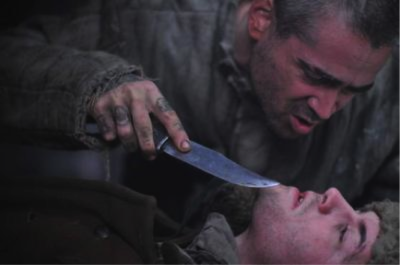
Each known for their meticulous attention to detail, Clarke and Weir didn’t just jump into this project. They researched and re-researched, interviewed and re-interviewed, traveled to over 8 countries, all in an effort to verify Rawicz’ accounts and to provide more depth and accuracy to the film. Over the years, a BBC documentary was produced that discounted Rawicz, alleging him not be truthful or that the book was about other prisoners and not himself. And while the truth was uncovered by Clarke indicating that Rawicz had, in fact, been amnestied and made his own trek from Siberia to the Middle East, it was also learned that at least four other Polish prisoners did escape and make the arduous 4000 mile journey to freedom in India. It is now immaterial whether or not Rawicz escaped or was amnestied or whether he trekked from Siberia to India or the Middle East. What matters is that Rawicz shed a light on the horrors of the Stalin regime and the darkness – and courage – that filled the world. 20 million souls passed through the gulags. Inspired by their story, THE WAY BACK is a magnificent and powerful fictional account of seven of them.
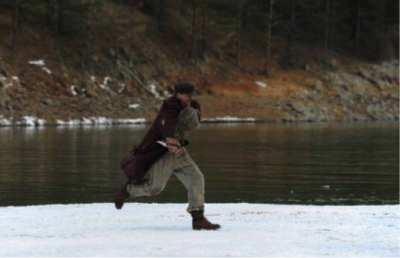
Janusz is a young officer in the Polish army. Eager and affable, he is taken prisoner by the Soviets under the most heinous and threatening of emotional circumstances. On capture, all prisoners were taken to the Siberian gulags where the temperature would drop of 70 below zero and malnutrition was the watchword of the day. Performing hard labor out in the blizzardous conditions or slaving in the gold mines, most prisoners never survived beyond a winter. On arriving at the gulag, Janusz meets up Khabarov, a chatty man, imprisoned for his politics. But Khabarov is also a dreamer and speaks only of escape and his plan to accomplish it. Inspired by Khabarov, Janusz hatches his own plan of escape and “befriends” several other prisoners with a desperate desire to live no matter what the cost in trying. Mr. Smith and his son left the Depression of the USA and went to Russia to work on the rail lines only to be taken captive (some 7000 Americans disappeared in the gulags). Valka, a local Russian criminal is actually in the gulag for his crimes. While Voss has been taken captive because of his religious beliefs, and artist Tomasz and the young Kazik have been taken just because they could be.
Escaping the gulag under cover of a blizzard, the little troupe heads first for Lake Baikal which is weeks away under the best of circumstances. If they can get there, they have a chance to taste freedom. Pressing ever forward, personalities take shape and alliances and conflicts form, as the number one priority becomes outrunning their captors, followed by food, water and reliance on one another.

As we know from the opening of the film, only three men emerge from the Himalayas and as the film progresses we go along on the journey, as hardship, pain and sickness pick them off one by one. From the ice and snow of Siberia to the 120 degree heat of the desert, we are travelling with these men, suffering with them and, in our hearts, urging them ever forward. Along the way, they encounter a young local girl named Irena and it is through her that the character and heart of each man takes shape and we see the men finally become one.
I have to commend each actor for their dedication to THE WAY BACK. From the physical hardships of eating just enough food to maintain energy to film, to the harsh shooting conditions of Mother Nature, as well as man-made harshness on a sound stage, each actor is beyond amazing. As if the physical nature of these roles wasn’t enough, each learned Russian, Polish or both. Particularly notable is Colin Farrell’s Russian and his accent when speaking English which was brilliantly executed.
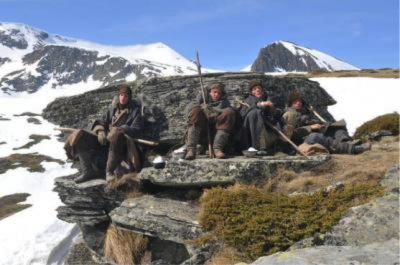
This is the finest performance of Jim Sturgess’ career. As Janusz, he fills the screen and carries the film with an inner strength and drive that is infectious. Sturgess gives Janusz this great like-ability and empathy that rivets you to the screen, even as Janusz is pushing, pushing, pushing, pushing his companions ever harder. It is the kindness within the character of Janusz that Sturgess uses to take the film to a higher emotional level.
Interestingly, in terms of acting and characterization, I felt nothing for Colin Farrell’s Valka. And while the character was not likeable in the least, it speaks volumes as Farrell’s abilities to give a performance that is spot on and that has some redemptive qualities that leak to the surface.

What can one say about Ed Harris. Ed Harris is Ed Harris is Ed Harris. Always strong and commanding no matter what the role, as Mr. Smith he is no different. Harris brings a tacit emotional strength and with the introduction of Saoirse Ronan’s Irena, this beautiful paternal love and affection. It is exciting to watch the emotional transformation he brings to Smith.
And as for Saoirse Ronan, her performance as Irena is beautifully done as she is the catalyst that gave some depth to the each man and serves as the connective tissue among them. It is through her that we learn about each beyond the superficial bravado or wimpiness; her character elicits the qualities of the human spirit that are necessary to survive and Ronan has a great natural gift at bringing this about. She also brings a carefree lightness to the dirt and dark of the gulag and the hardship of the journey; a breathe of fresh air.
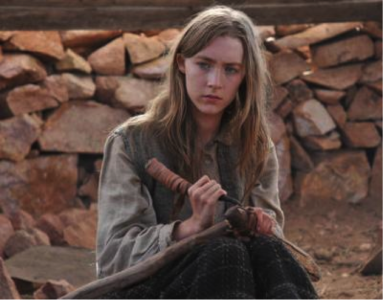
Written by Peter Weir and Keith Clarke, the story itself is miraculous and motivational. On first seeing the film, however, I felt Weir had fallen short in his direction where it came to the dissection of the emotion of the human condition, concentrating on the physical hardships as opposed to the mental and emotional. But by film’s end, I was completely engrossed in the psyche of each man for it is through that visual physical hardship that we learn and feel the powerful emotional and mental fortitude of man.
Technically, the film is masterful, but for a few exceptions that fall more within script continuity and common sense flaws. As he did with Weir in “Master and Commander”, Russell Boyd’s cinematography is exemplary. Wonderful choices of patina, as well as lighting and framing – long shots of 7 little bodies, and then 5 little bodies and then 4 and then 3 trudging through the elements in vast openness be it desert, snow or mountains, reinforces the singularity, the lonesomeness, the aloneness of our band of not so merry men and girl. Close-ups are almost non-existent with one or two exceptions – Ed Harris’s Smith when purple and blistered and near death in the desert and then a rapidly fading Irena, the latter of which is quite beautiful and touching with a shot just wide enough to show her angelic blissfully peaceful face and the hands of some of the men holding hers. Those shots brought a tear to my eye and according to Weir, close-ups such as those weree reserved for that very purpose. On the slip side, the grit that Boyd brings to the gulag with the lighting and sickly green patina, contrasted by the pristine beauty and cleanliness of the pure white snow outside is striking. The globe trotting that was implemented in filming only adds to the overall visual and technical splendor. And the scenes of blizzards and a desert sandstorm – brilliant. Another integral part of this production is the sound which is so precise and meticulous, each raindrop, each pebble, each voice against a howling wind is exquisitely blended and toned.
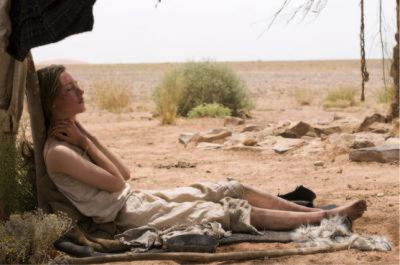
Perhaps nitpicky, but disturbing disconnected were two scenes – one involving Ed Harris post “almost dead” and then when addressing the food the men scavenged before their escape. We are given a sense of a long time collection of food before the escape – meat, root vegetables and bread – yet nothing was molded. Granted, cold will keep food longer, but this seems a bit much. And then we have a very emotional scene with a purple blistered Ed Harris in the desert but after a pep talk from James Sturgess’ Janusz, he is up walking and hiking with a face that is no longer sunburned, purple or blistered. Was that water at the mirage, miracle water from the Dead Sea or some holy place? A cure all? His skin looked wonderful and rejuvenated.
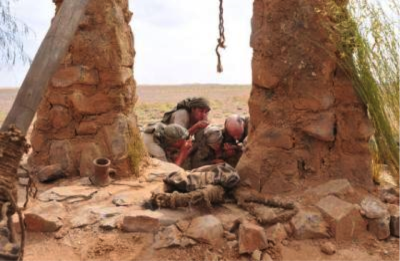
When I asked Peter Weir what compelled him to tell this magnificent story of the human spirit, his response was heartfelt. “I can say now what I didn’t know then. I just felt it. It was human beings up against great landscapes. It was faces juxtaposed with mountains and forests. Human nature and nature. And then, specifically, what was it inside these people that enabled them to survive. What could they draw on? What is that we do draw on? What makes us survive anyway? What makes us keep going?” Weir succinctly answers these questions within the film to an inspiring level.
THE WAY BACK. A majestic and powerful film. A triumph of the human spirit.












